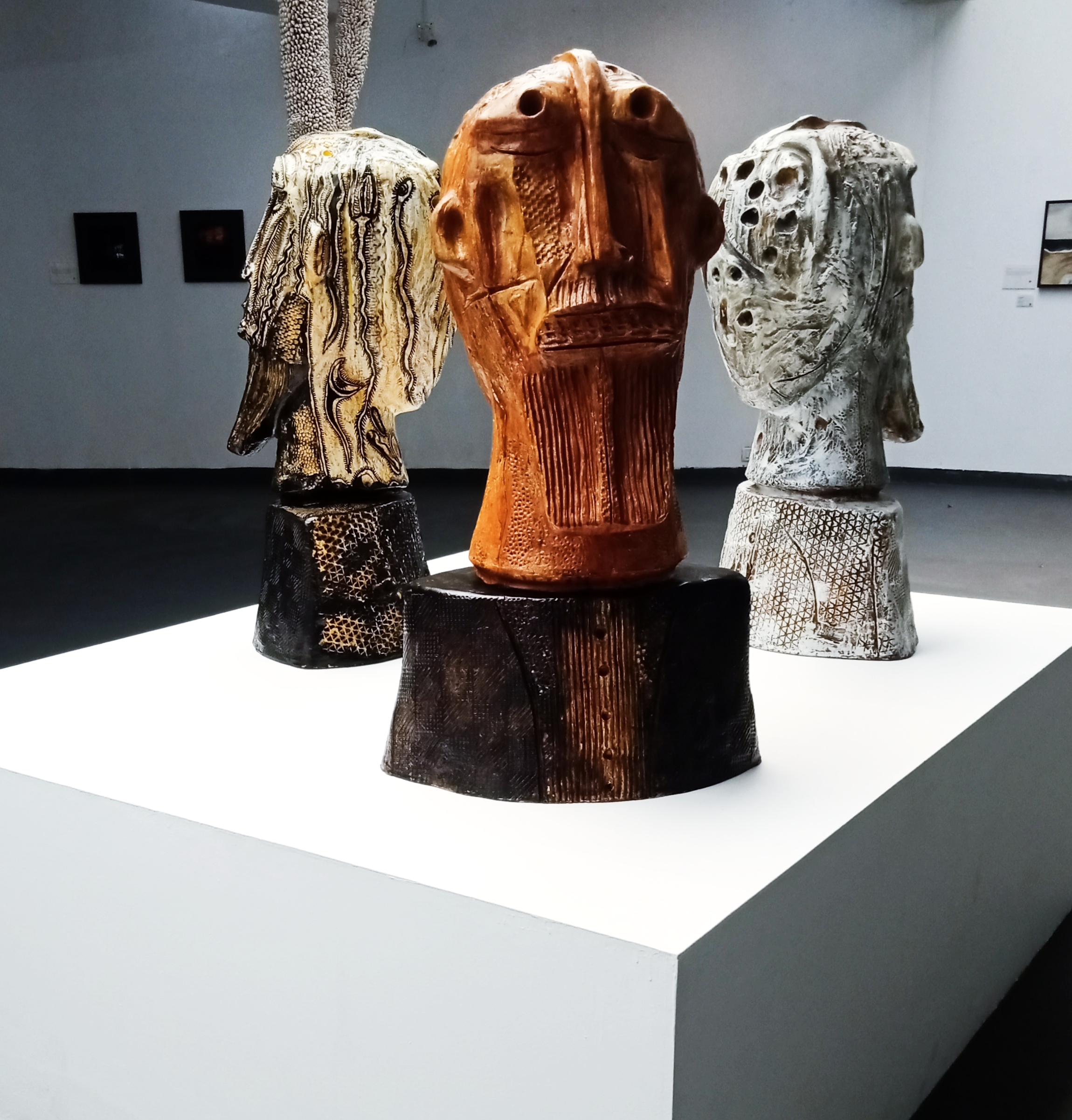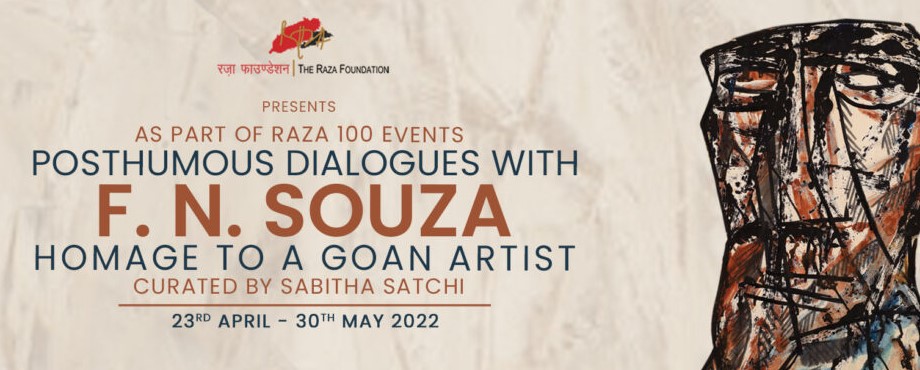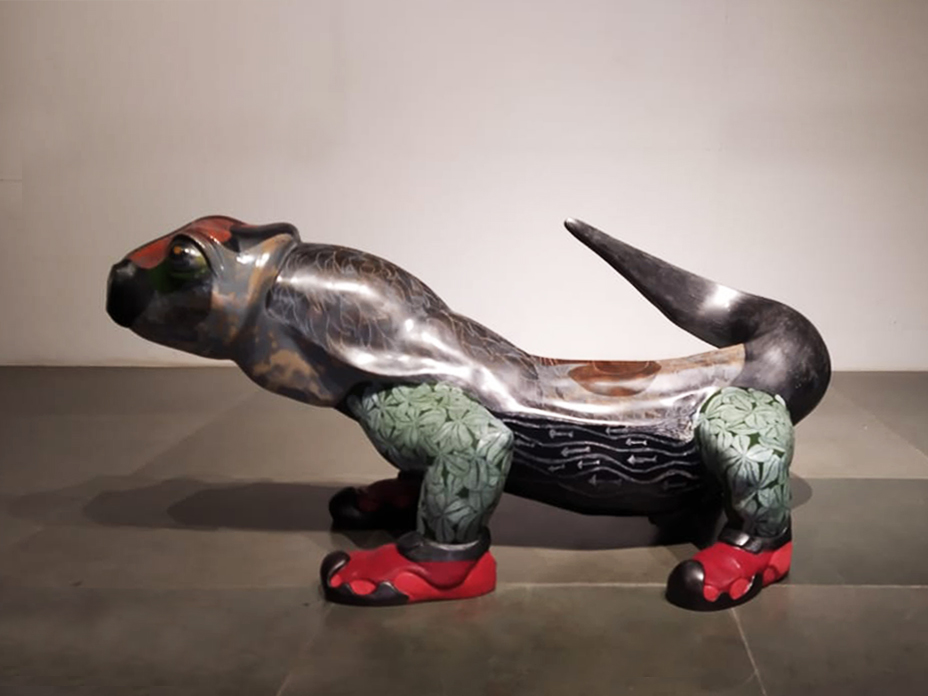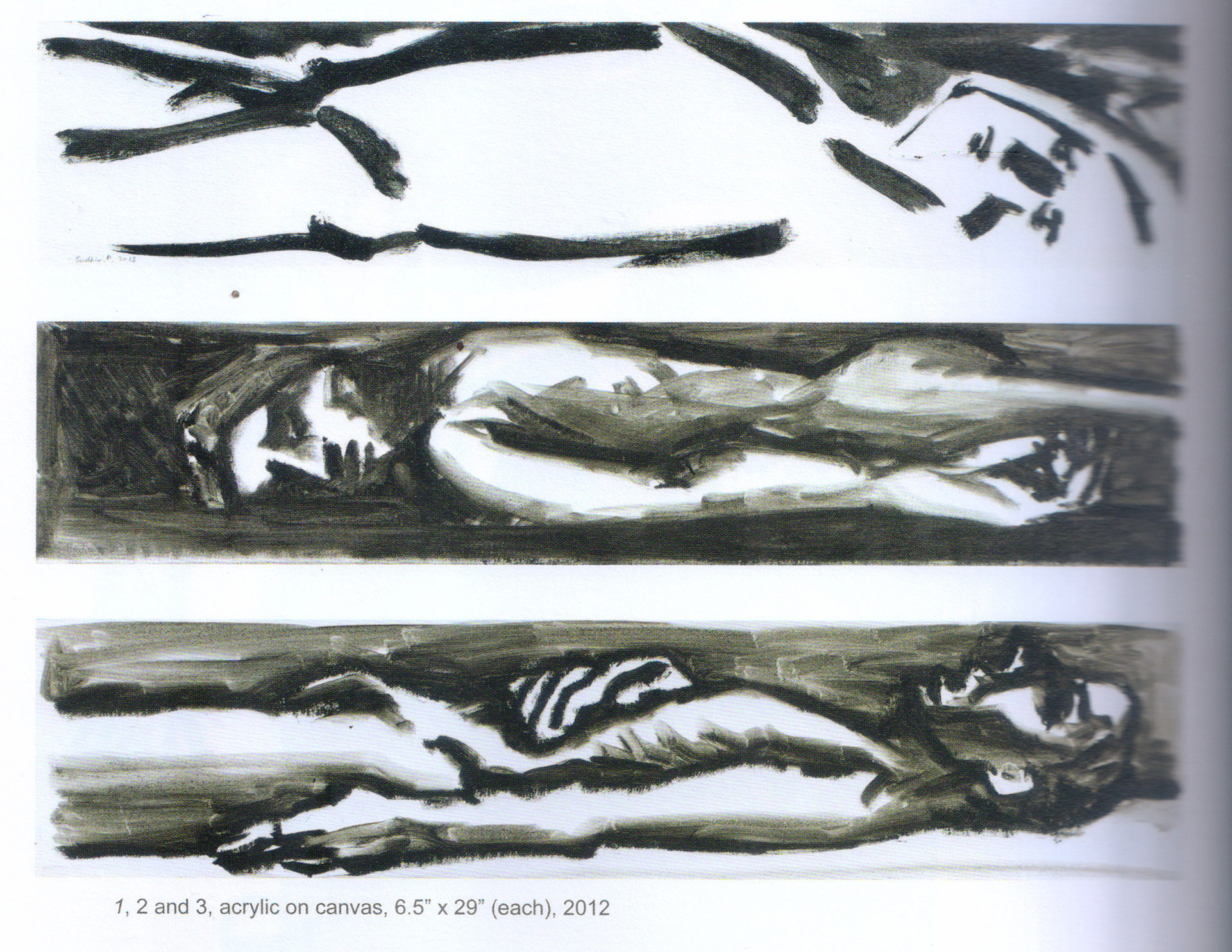As part of the ongoing Raza Centenary celebrations organised by The Raza Foundation, New Delhi, to commemorate S H Raza and his artist friends in the Progressive Artists’ Group, Bombay, Posthumous Dialogues with F N Souza, an exhibition of contemporary art to honour the legacy of the great Modernist Indian artist F N Souza, opened at the Museum of Goa, Pilerne, Goa, on 23rd April 2022.
This exhibition, with both established and upcoming artists, curated by writer and critic Sabitha Satchi, aims to showcase the artistic legacy of Souza’s bold, brutal and often distorted figures, his innovative forms in contemporary art, and its significance in a world radically altered by a global pandemic and rising suffering and sectarian violence.
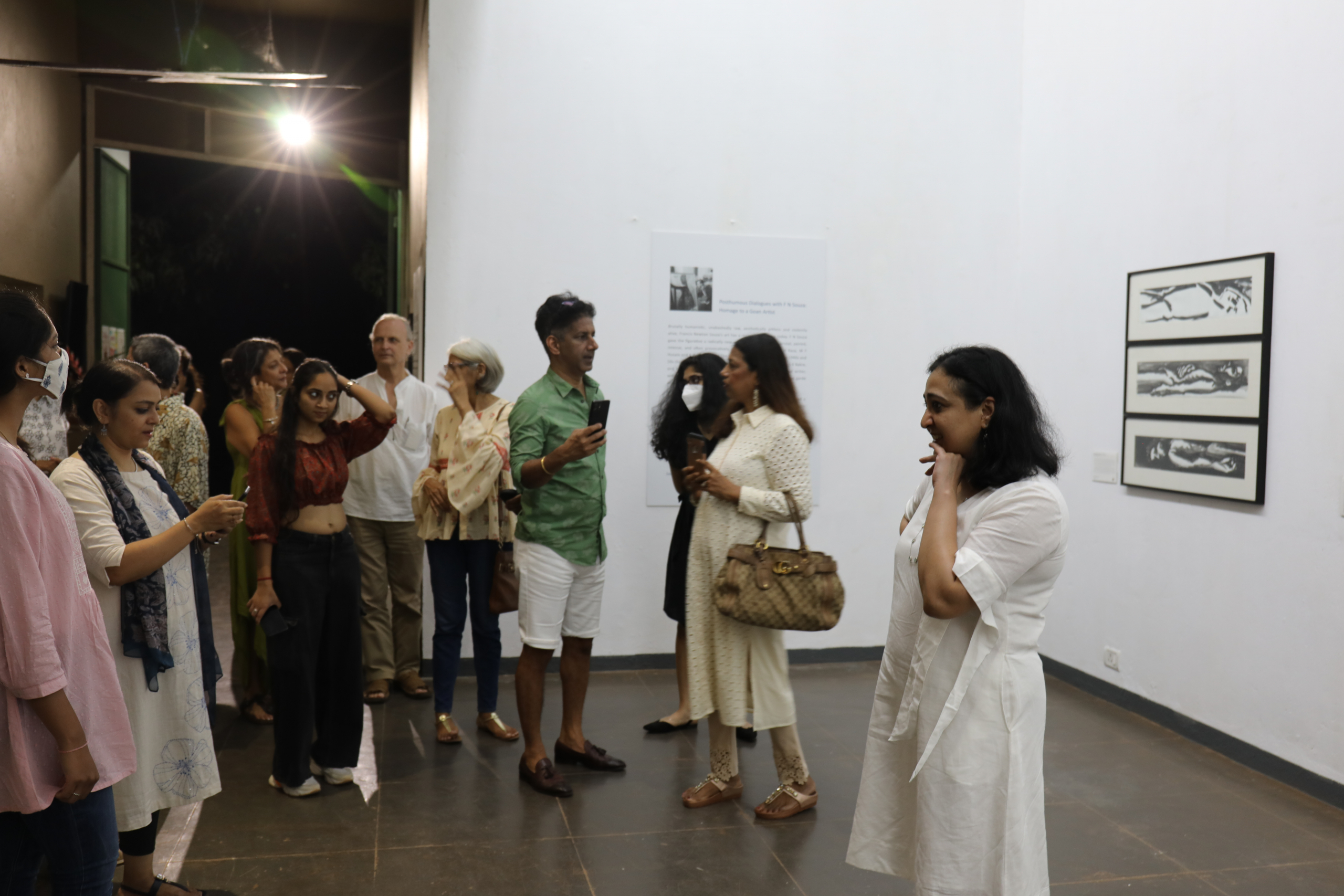
Curator’s Note:
Brutally humanistic, unabashedly raw, aesthetically pitiless and violently alive, Francis Newton Souza’s art has a renewed relevance today. F N Souza gave the figurative a radically new aesthetic language: bold, brutal, pained, intense, and often provocatively erotic Souza, along with S H Raza, M F Husain and K H Ara founded The Bombay Progressive Group in the 1940s and 5Os that later included Akbar Padamsee, Tyeb Mehta, V S Gaitonde, S K Bakre, and Krishen Khanna among other artists. Souza, who was a gifted writer, wrote the manifesto of the group which forged an international avant garde aesthetic style.
The relevance of Souza, who is a Catholic born in Saligao, Goa, India, and a black immigrant in the West, whose works intensely engaged with brutality and suffering in content; the irregular in form; and the distorted human figure in powerful lines and colours, cannot be emphasised enough in our world radically altered by a global pandemic and rising sectarian violence.
This exhibition of contemporary art is a homage to Souza, the internationally reputed artist who never received his due place in Indian art history while alive, even though his works sold for millions of dollars after his death. The works of 26 artists — Atul Dodiya, Chaitali Morajkar, Charudatt Pande, Harshada Kerkar, Julio D’Souza, K M Madhusudhanan, Kalidas Mhamal, Kedar Dhondu, Pradeep Naik, Pramod Prakash, Praneet Soi, Saba Hasan, Sachin Naik, Santosh Morajkar, Shailesh Dabholkar, Shripad Gurav, Siddharth Gosavi, Siddharth Kerkar, Siji Krishnan, Subodh Kerkar, Sudhir Patwardhan, Sweety Joshi, Uday Shanbhag, Viraj Naik, Vitesh Naik, Vivan Sundaram — displayed in this exhibition engage with the lasting legacy of Francis Newton Souza, the master artist born in Goa.

The following are some of the works displayed at the exhibition with notes by Sabitha Satchi:
Atul Dodiya
Atul Dodiya’s three works here are from a series that he has been doing since the beginning of the pandemic. These works, in a style and in colours that reference the early twentieth century painter Carlo Carrá, have elongated human figures in action. These paintings have an intermixed sense of both contemplative stillness and of quiet movement. Dodiya’s figures inhabit an earth-toned landscape, and evoke a feeling of solace in healing nature.
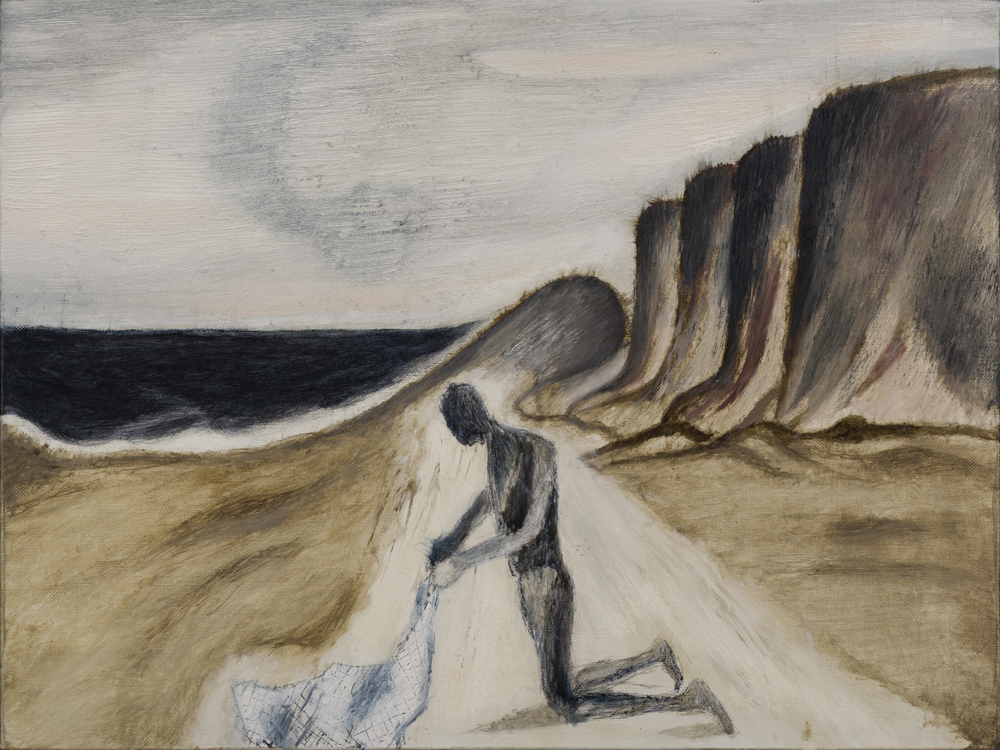
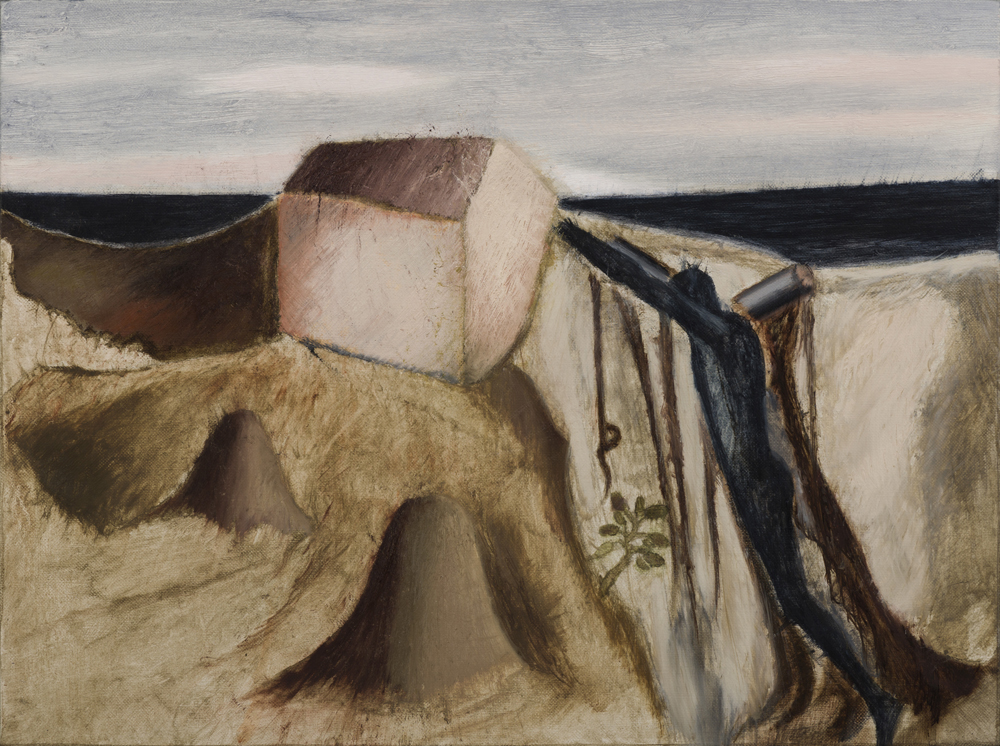
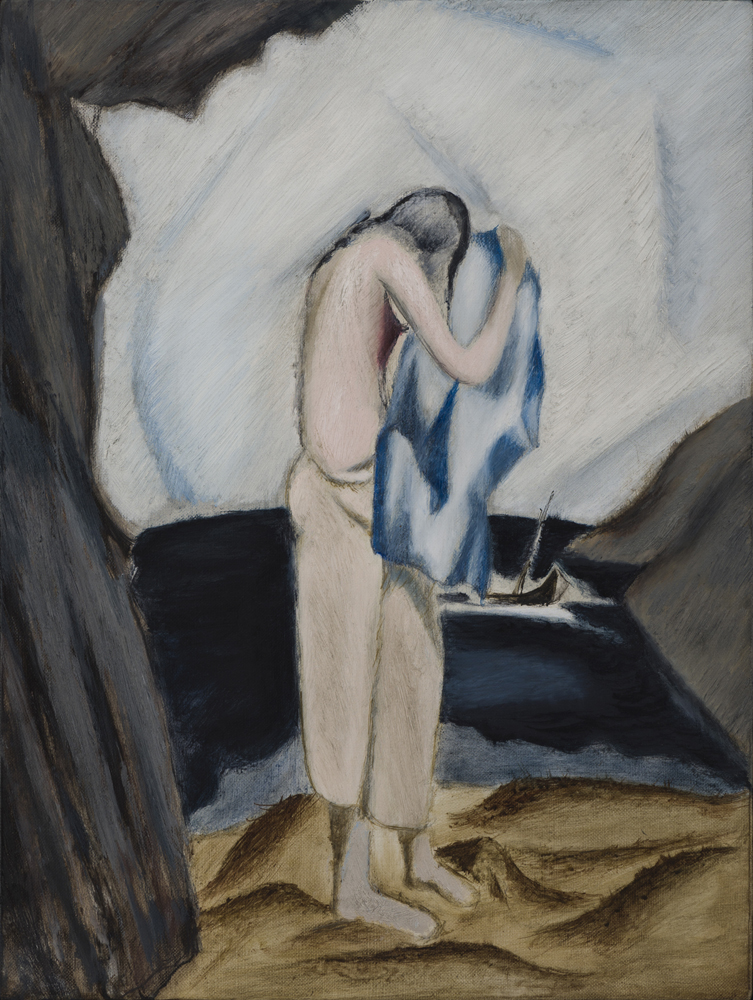
Pradeep Naik
Pradeep Naik’s work combines several elements in a single harmonious pictorial frame. There is the landscape burning in war after a bombing, there is a grey sky-like patch that overhangs it, there is the image of industrial pollution, and a Souzaesque line-drawing. Naik masterfully composes these elements in tension with each other as well as in singular harmony of colour and form. This work speaks of our times – of war, climate change, disease, and violence. Yet there is human love and merciful nature in a sky laden with rainclouds.
Santosh Morajkar
Santosh Morajkar’s work comes out of a decades-long engagement with Indian Modernist art that includes a deep study of F N Souza’s paintings and drawings. In this sculpture, which is a creative animal form made almost like a collage of different elements, one sees a forceful power of violent erotic charge. It looks as if the beast is ready to attack – there is both defiance in its posture, and melancholy in its eyes. The colours used in the sculpture are earthy and the forceful form is a homage to Souza’s powerful lines and the libidinal energy of his works.
Siji Krishnan
Siji Krishnan’s portraits in watercolour explore radically new ways of engaging with the human figure. Her colour palette is faint earthy tones, almost suggesting a fading away, an impending absence that is lurking behind. Some of her male figures have prominent nipples, suggesting the inherent androgynous nature of the human, particularly of a paternal figure, radically altering a realist representation of the figure. Her works consistently engage with and interrogate gender categories and the idea of the family.
Siji Krishnan says of her own art, “I am fascinated by the idea of portraits — of people, other living beings and nature — delving into the inner depths of their personalities, inviting them to saturate my senses. They are mostly unclear images and are perceived by me in abstraction though they do have a figurative structure. I aim to capture the presence of all the qualities I sense, using colour with restrained detailing, for an unchecked flow of consciousness. I am realizing that it is essential to move beyond physical boundaries. This will also help me to better understand the processes of my mind.”
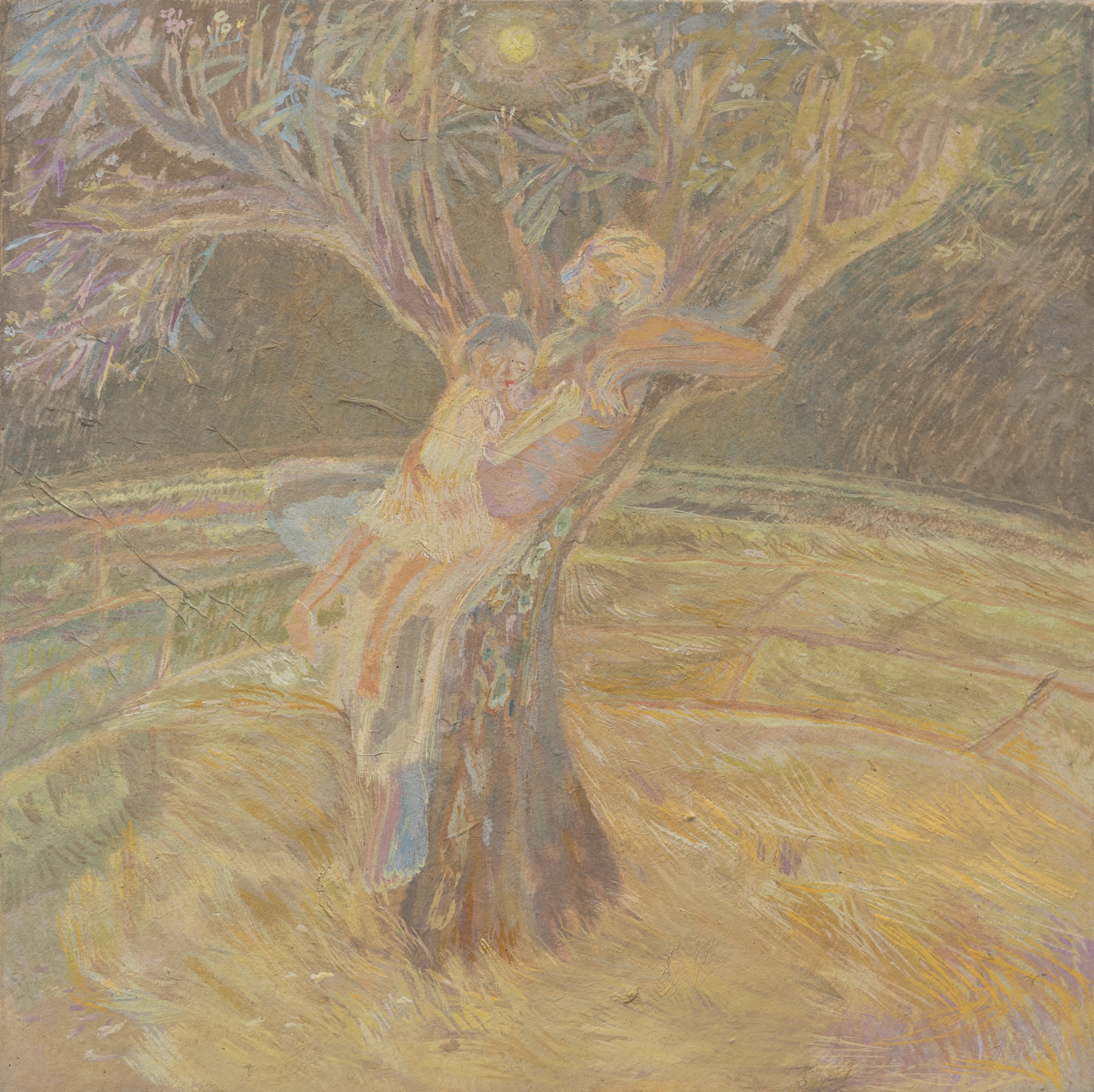

Sudhir Patwardhan
From 2006-07 onwards Patwardhan’s art has had a constant engagement with street violence. The artist says that by 2012-13, when these works were created, political violence was no longer just lurking below the surface of the “normal”, but had become an eruption into everyday life, a new “normal”. Over the last two decades Patwardhan has studied images of bodies in violence in Renaissance Art, in Goya’s works, as well as in Mughal miniature – such as the images of war in the paintings in the Mughal manuscript of the Persian translation of The Mahabharata.
The mutilated and brutalised human figure has been a sustained aesthetic meditation for Patwardhan. In ‘Unclaimed Bodies’ 1, 2 & 3, we see three inert figures one below the other, like in a narrow coffin, and arranged like the drawers of cadavers in a morgue. The work has a reference to Hans Holbein’s ‘The Body of the Dead Christ in the Tomb’. The narrowness of the frame constricts the figure inside, and the colours used in acrylic are stark: black and white. The artist constricts himself inside self-imposed limitations of chromatic possibilities, identifying with the subject of the painting.
Subodh Kerkar
Subodh Kerkar has been engaged in a close study of F N Souza’s art and creating works inspired by Souza continually over the last two years. Kerkar’s innovation lies in the use of the medium of clay, and the materials he uses to create texture. And yet there are lines of figures drawn on clay in a fluid hand. In this set of three sculptures of a head with different faces on either side, Subodh Kerkar has given different treatments to the surface of the same form, referencing his own as well as Souza’s compulsive artistic processes. The sculpture is profoundly Souzaesque and to see the textured double-faced head, the viewer has to walk around it, thus inviting her to the movement of a pradakshina.
Subodh Kerkar says: “Souza never did a sculpture. This work is a sculpture of a head with faces on either side, both Souzaesque. These are extension of my works on clay hundreds of which I have drawn, where I used cycle tyres and other materials for texture on clay. What’s interesting for me are the teeth in Souza’s portraits. Dentures are most significant in Souza’s drawings – he distorts the mouth and gives new shapes to the mouth and teeth. When doing clay, to bring out the texture of the dentures, I used the impression of tyres. I am secretly happy that Souza would have been pleased with what I have done in homage to his legacy.”
